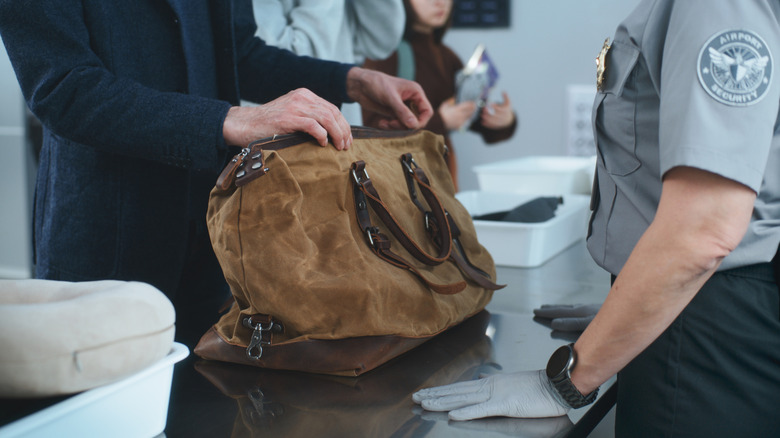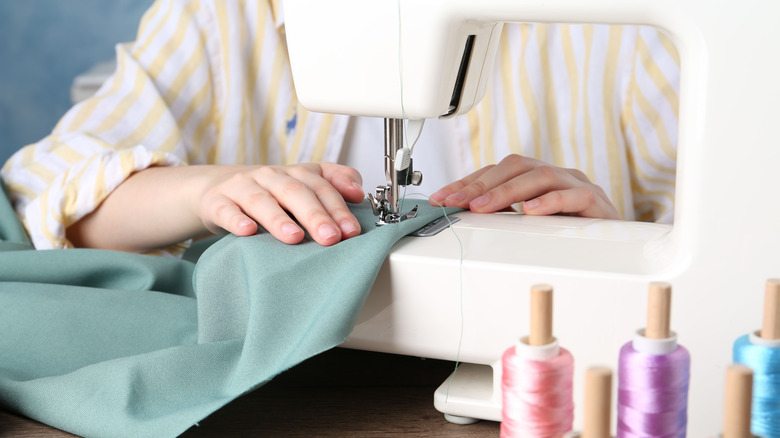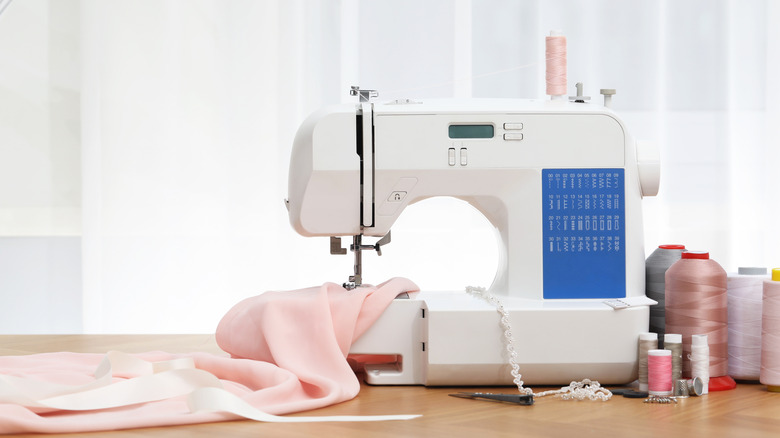TSA Actually Lets Travelers Carry This Bizarre, Unexpected Item Onto A Plane
Anytime you wander into an airport and make your way to the check-in counter, you're bound to witness some oddly shaped items being checked in. You might see a surfboard, a tuba case, and the standard baby carriage or two, but did you know that there is an extremely bizarre item that TSA actually allows onto the plane with you? You won't believe it, but you are allowed to bring a whole sewing machine onboard your next flight. It does make you think — somewhere, high in the sky, there may be a pair of jeans with holes being repaired right now.
While we try to think carefully before packing our carry-ons and follow all the best tips to avoid being flagged by TSA, some sewing enthusiasts could quite literally be frogging (fixing a mistake with a seam ripper) 35,000 feet above the clouds. Whether you plan on working on a UFO (unfinished object) or are finally getting to your WISP (work in slow process) at your destination, knowing that you can bring this odd item through TSA will make some hemmers extremely happy. Just make sure to visit the official TSA website to verify whether your sewing machine is permitted, so you'll be nice and thready for your next flight. See what we did there?
Getting through TSA with a sewing machine
Sew, it seams you're thready to travel with your trusty sewing machine. We've got you covered, so you'll breeze through the TSA check point faster than you can do a straight stitch. Knowing the difference between a carry-on and a personal item is crucial if you want to bring your sewing machine on board your next flight. Typically, domestic flights in the United States allow one of each. However, the size of a sewing machine case may not fit under the seat, so it will be considered your one allowed carry-on item. Bringing your sewing machine in the cabin with you during your travels is highly recommended, as you'll be able to ensure that it won't get tossed around, damaged, or, worse, straight up broken. Airlines may have different rules for carry-on size and weight limits, so it's always best to check in advance before heading to the airport.
There's always a nervous feeling in your gut while going through TSA that nobody can really explain. While you might fret over having pointy objects like a sewing needle with your machine, TSA typically won't flag it. Generally, you can even keep scissors up to 4 inches long (from the pivot point) in your carry-on. Before traveling, though, you'll want to prepare your sewing machine for transit and TSA by removing the needle entirely and placing it into your checked bag (if any). Alternatively, tape your needle flat to the sewing machine to make it TSA-safe.
Other ways to prep your sewing machine for a day of flying
Seasoned jet-setting sewing enthusiasts know all kinds of additional tips for traveling with sewing machines to ensure safe and hassle-free transport. To start, you can try breaking down as much of the machine as possible, removing parts like the foot pedal (the portion that you can see the stitching through to the fabric and needle), the power cord, and the presser foot and placing them in a checked bag. This will also reduce the case's weight, which always comes in handy when bringing a carry-on.
International travel with sewing machines isn't always advisable, since electrical currents abroad usually differ from what's used in the United States, though you can buy adapters if needed. Travelers that are keen on perfecting their top and understitch should consider buying a travel case for their sewing machine. Premier Stitching, for instance, has a variety of stylish and functional bags, including trolleys with wheels, so you can continue to perfect your sewing technique wherever you go without the airline leaving you hanging by a thread.


